
surfresearch.com.au
newspapers : 1920
newspapers : 1920
| home | catalogue | history | references | appendix |
 |
surfresearch.com.au
newspapers : 1920 |
|
|
|
|
|
| 3 January 1920 16 January 1920 18 January 1920 21 January 1920 11 February 1920 16 February 1920 20 February 1920 6 March 1920 19 March 1920 22 March 1920 9 April 1920 21 April 1920 27 April 1920 30 April 1920 12 May 1920 11 June 1920 12 June 1920 15 June 1920
16 June 1920 7 July 1920 17 July 1920 26 July 1920 26 August 1920 3 October 1920 30 October 1920 15 November 1920 |
Headstand
in Sydney,
with photograph. Bondi Carnival Programme Bondi Carnival Postponed Surfboard Exhibition, Manly. Surfboards and Surfboats for Newcastle. Newcastle Carnival. Newcastle Carnival. Surfboard Exhibition, Manly. Jean Curlewis Goes Down the Mine, Sydney. Army Plane Swoops Down on a Surfer, Waikiki. Miss Fitzgibbon Wins Surf Board Display, Coolangatta. Prince of Wales and Duke, Waikiki. Wake Surfing Canoe, Hudson River. Balsa Wood Surfboard for Hawaii. Prince of Wales at Waikiki. Mildred Leo Clemens and Her Hawaiians to Tour US, with photographs. Misses Bleibtrey and Boyle and the Prince of Wales, Waikiki. Film- Surf Riding in Hawaii, Goulburn, NSW. Surf Board and Surf-Mat Advertisement, New York. Viscountess Furness in Canoe Mishap, Waikiki. Duke Kahanamoku Interview, with illustration. Balsa wood Fish Surfboard, (Atlantic City?), with photograph. Atlantic City Lifeguards and Surfboards, , with photograph. Summer Preview: Surf, Boards and Girls, Sydney, with photograph. Alec Wickam's surfboard, Dee Why beach, 1903. Mildred Clemens' Presentation on Hawaii, Notre Dame. |
| The
Capricornian Rockhampton, Queensland, Saturday 3 January 1920, page 36. Surfing in Sydney AN EXPERT SURFER HIDING ON HIS SURF BOARD HEAD
DOWNWARDS.
Trove 1920 'Surfing in Sydney.', The Capricornian (Rockhampton, Qld. : 1875 - 1929), 3 January, p. 36. , viewed 17 Apr 2016, http://nla.gov.au/nla.news-article72038310 |
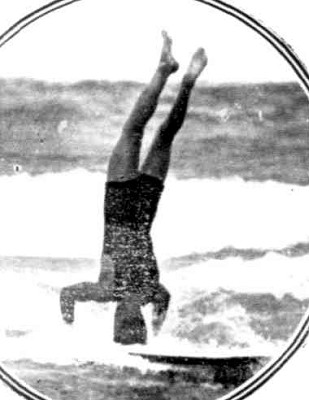 |
TWEED HEADS SWIMMlNG CARNIVAL.
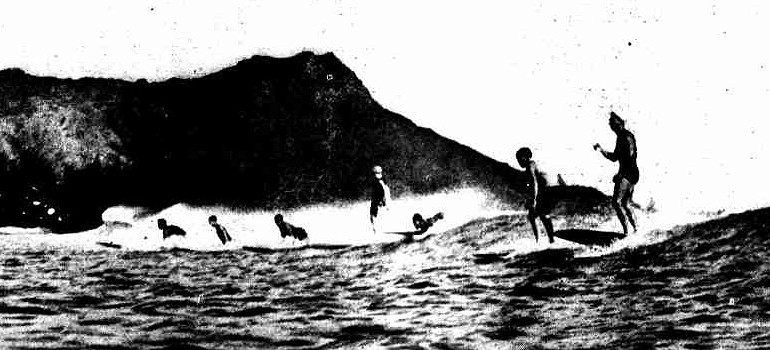
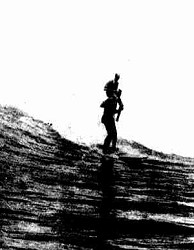 |
An Expert at the
Game.
Rising to the Occasion at Waikiki.
|
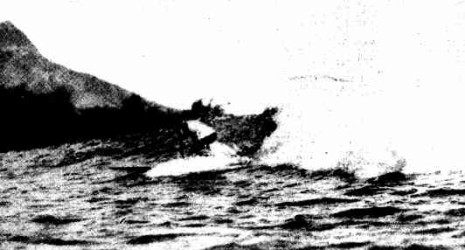 |
| The
Washington Herald. D.C., May 12, 1920, page 2. PRINCE OF
WALES JOLLY WELL PLEASED BY WAIKIKI WAVES
There was a king in a days of old that told the waves to lie down and stay so. But, his royal highness, the Prince of Wales, tried no such monkeyshines with the waves of Waikiki. He took what they what they gave him and laughed. During his brief stay at Honolulu the prince spent several hours surf-boarding and said he was "jolly well pleased." Chronicling America The Washington herald. (Washington, D.C.) 1906-1939, May 12, 1920, Image 2 Image and text provided by Library of Congress, Washington, DC Persistent link: http://chroniclingamerica.loc.gov/lccn/sn83045433/1920-05-12/ed-1/seq-2/ |
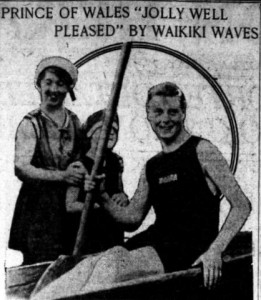 |
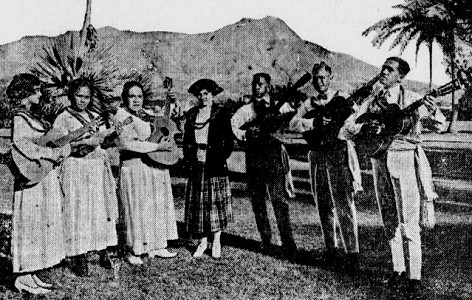
|
Daring American Girl Sees Hawaii from the Clouds Mildred Leo Clement, in Quest of Lecture Material and Photos, Resorts to Novel Scheme Mildred Leo Clemens
|
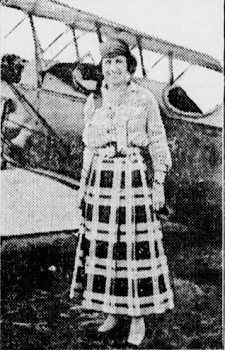 |
|
HAWAIIAN MUSICIANS SING FOR AMERICAN GIRL ON PICTURESQUE BEACH AT WAIKIKI "Aloha Oe" As Warbled by Native Singers Furnishes New Thrill for Mildred Leo Clemens, Visiting Islands. Miss Clemens
and Her Hawaiians on the Beach at Waikiki.
|
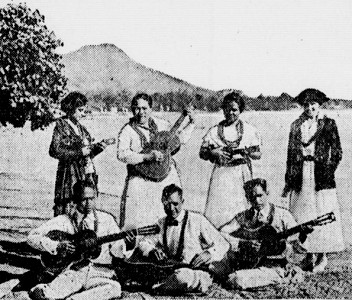 |
Hawaiian Art Is Distinctive Asserts Native Soprano Miss Kahaia Pahu, of Honolulu,States Native Tone Quality Is Inimitable by Other Nationalities Miss Kahaia Pahu of Honolulu. |
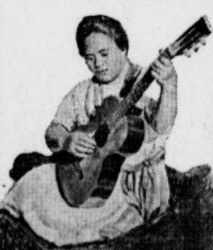 |
|
America's Best Canoes Canoe Cushions and Furnishings Aquaplanes Surf Boards and Surf Horse* Beach Umbrellas Marine Binoculars Surf Mattresses - Swimming Wings Life Preservers Outrigger Engines ... |
 |
|
a cracker box board ... using It like a surf board. The cracker box board was probably one panel from a timber biscuit and cracker box in common use 1900-1940. The example, left, by F.S. Wertz and Company of Reading, Pennsylvania, measures 18" x 13" x 13". A board from this box would be 18'' x 13'', a very suitable size for a hand-board. Image from ebay.com http://www.ebay.com/itm/Antique-Primitive-Wooden-Biscuit-Box-F-S-Wertz-cracker-wooden-advertising-box-/331452571049 Also see https://www.pinterest.com/pjs9060/antique-advertising-crates-boxes/ |
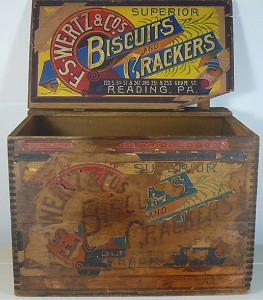 |
| East
Oregonian Pendleton, July 26, 1920, page 2. BOBBIE RIDES WAVES ON A "FISH"
Dad may talk of "the big one that got away," but Bobbie "caught" his fish and hangs onto it. Bobbies' big fish is made from balsa wood- lighter even than cork. It makes a fine surf board, ridding like a bubble on the ocean. Chronicling America East Oregonian : E.O. (Pendleton, Umatilla Co., Or.) 1888-current, July 26, 1920, DAILY EDITION, Image 2 Image and text provided by University of Oregon Libraries; Eugene, OR Persistent link: http://chroniclingamerica.loc.gov/lccn/sn88086023/1920-07-26/ed-1/seq-2/ |
 |
| Evening
Public Ledger. Philadelphia, August 23, 1920, page 20. GREAT SPORT AT
ATLANTIC CITY.
The life guards are always willing to teach the way to use the surf boards. - Ledger Photo Service. Chronicling America Evening public ledger. (Philadelphia [Pa.]) 1914-1942, August 23, 1920, NIGHT EXTRA, Image 20 Image and text provided by Penn State University Libraries; University Park, PA Persistent link: http://chroniclingamerica.loc.gov/lccn/sn83045211/1920-08-23/ed-1/seq-20/ |
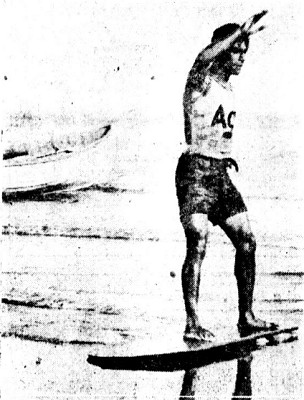 |
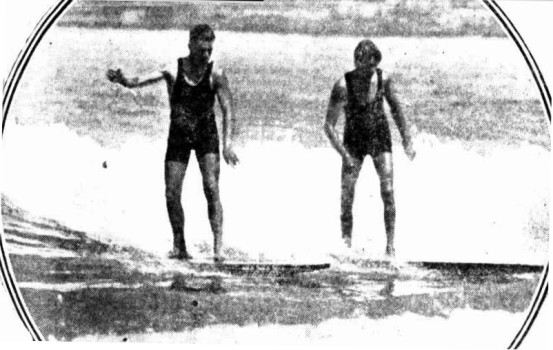
| The Press club
will meet in the journalism room of the library on
Monday evening to hear Stuart Carroll speak on the
editorial angle of the newspaper. Mr. Carroll is an old student. His versification finds resting place on the walls of many campus rooms and many student admirers of the department of Journalism are interested in his appearance at the Press club meeting. The Mildred Leo Clemens company of Hawaiian artists proved the most interesting concert of the year at Washington hall Saturday night. Five natives presented a program of vocal, instrumental, not to mention terpischorial entertainment, which held the audience long after the usual hour. Miss Clemens delivered a lecture on the Island, illustrated by her own photograph and moving pictures, showing excellent views of a volcano in action and molten lava in close-up. The famous beach at Waikiki was presented with exciting pictures of the native sports of swimming and surf-board riding. |
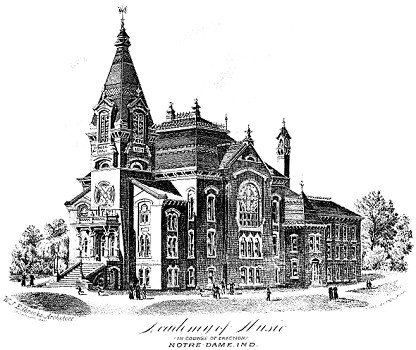 Washington
Hall
|
| Le miroir des sports,
Paris, Wednesday, December 2, 1920, issue 22. An article entitled Sports athlétiques et nautiques en Australie (Athletic and Aquatic Sports in Australia). Reproduces The trick of the Board, printed in Sydney's Sunday Times, 3 October 1920, p. 19, above. Noted by Hervé Manificat, in the Surf Blurb, May 2016. 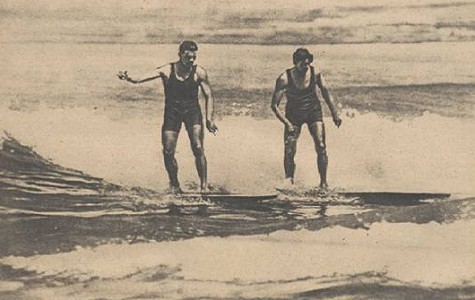 |
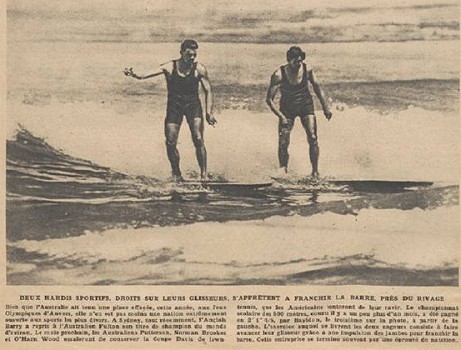 |
|
|
|
|
|

| home | catalogue | history | references | appendix |